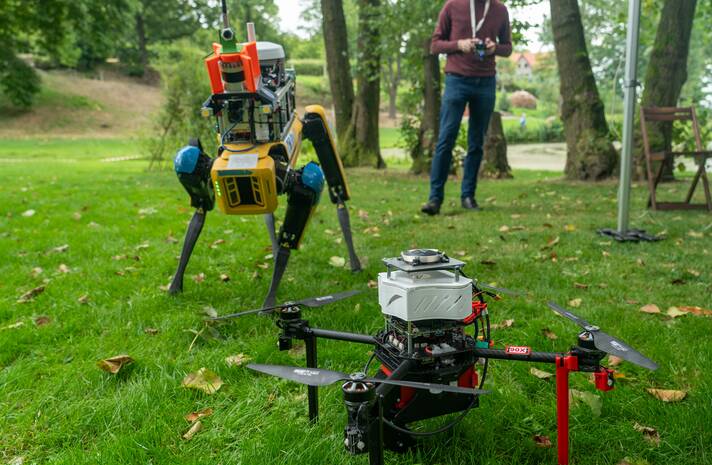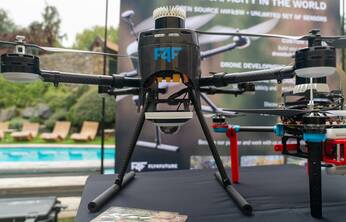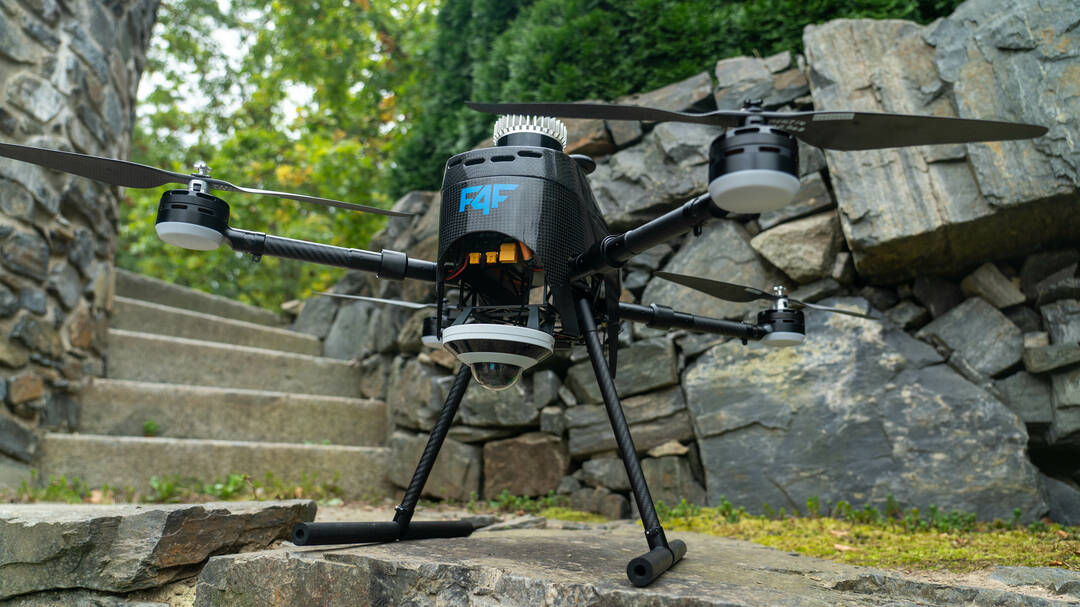The Axis Demoshow meeting for about a hundred security managers and experts from major Czech companies and institutions took place on 21 September 2023 in the premises of the Všetice Farm near Benešov u Prahy. The programme included demonstrations of experimental systems assembled by teams led by Professor Tomáš Svoboda and Associate Professor Martin Saska from the Department of Cybernetics at FEE CTU. Fly4F Fly4Future and a robot dog Spot from Boston Dynamics.
Not just cameras on board - integration is key
"The fact that there are robot dogs and autonomous drones, and that cameras can be installed on them to monitor real-time images, is of course no longer news today. However, in our world of security technology, what cannot be integrated into an existing security system and works separately is of limited practical value," says Dalibor Smažinka of Axis Communications. It may not yet be a packaged solution ready for sale and deployment, but we may not be far from that moment."
Robotic drones are closer to real deployment
The first solution introduced was the incorporation of the AXIS F9114 basic camera unit and AXIS F2015 optical sensor into Fly4Future modular drones, which are manufactured by a university spin-out created at the Department of Cybernetics of the CTU Faculty of Electrical Engineering. An important finding here was that the opensource robotic operating system ROS already includes an application interface for Axis cameras, and in turn these cameras are then designed to be integrated into video management software (VMS), either directly from Axis (Axis Camera Station) or from third parties such as global manufacturers Genetec and Milestone. This is crucial for real-world drone deployments, as operating a security solution with two unconnected camera systems is a complication. "Fly4Future drones today can operate completely autonomously, either alone or in swarms, they can guard a perim eter according to a pre-set flight plan or fly out just to check an alarm. In the Axis integrated camera solution we showed today, the video analytics software runs directly on the camera and sends metadata to the regular VMS system in a standard way. The drone is then displayed in the control room as one of the other intelligent security cameras," says Martin Saska, head of the Multirobotic Systems Group at FEE CTU, whose team works closely with Fly4Future. Since Fly4Future drones are already commercially available on demand, a similar security installation might not be science fiction today, according to Saska. "In a normal operation, of course, the essentials would have to be worked out, such as the exact configuration of the tasks, the self-charging of the drone, on-site operator training and ongoing service - but all this is solvable."
A pack of robops as part of a camera system?
The deployment of security robot dogs is a little further down the road. The Department of Cybernetics of the CTU Faculty of Electrical Engineering uses experimental Spot robots from Boston Dynamics in teaching and research, among many other robots. The Axis Demo Show featured a built-in modular IP camera, again AXIS F9114, this time with 4 camera sensors, namely one standard AXIS F2105 sensor, two AXIS F2115 varifocal sensors and one AXIS F2135 wide-angle sensor mounted on the back of the robops. Since the camera had Axis Object Analytics software using artificial intelligence, the walking robot was able to distinguish between objects and people in the frame, and if it identified a person, it played a warning message with the help of the AXIS C1410 speaker. "The connection to commonly used camera systems is interesting," says Tomáš Svoboda, team leader at the CTU FEE, "but the real use of an autonomous robot for security tasks would require further experimentation and development directed by a capable integration partner. I can imagine an installation where a robotic team is brought on site and tasked with searching unknown or rugged terrain, checking meters, or if robots make random rounds to perform security at a location where it makes no sense to install a permanent camera system. The deployment of a robotic team in a previously unknown or dynamic environment, moreover, performing a large range of tasks, including possible interaction with humans, is an open and interesting research problem that we are addressing at the faculty," concludes Tomáš Svoboda.





